I do believe my favorite question to date just came in to Ask Gardenerd from Jeff Bremer:
“Hi Christy, How do I encourage volunteers? Over the years in my tomato garden, a few volunteers would appear each season. Last year, in hopes of getting a lot of volunteers (for this year) whenever a tomato was damaged or half-eaten by some critter, I buried it in the soil. However, this year, not one volunteer arose. Is there anything I can do to encourage them for next year? Thx, Jeff “
Jeff, I love that you appreciate the wonder and blessing of tomato volunteers. Here at Gardenerd we affectionately call them, “Nature’s slap in the face.” They don’t need us and they grow better than anything we cultivate on purpose. That’s how I think of them anyway.
Volunteer Tomatoes
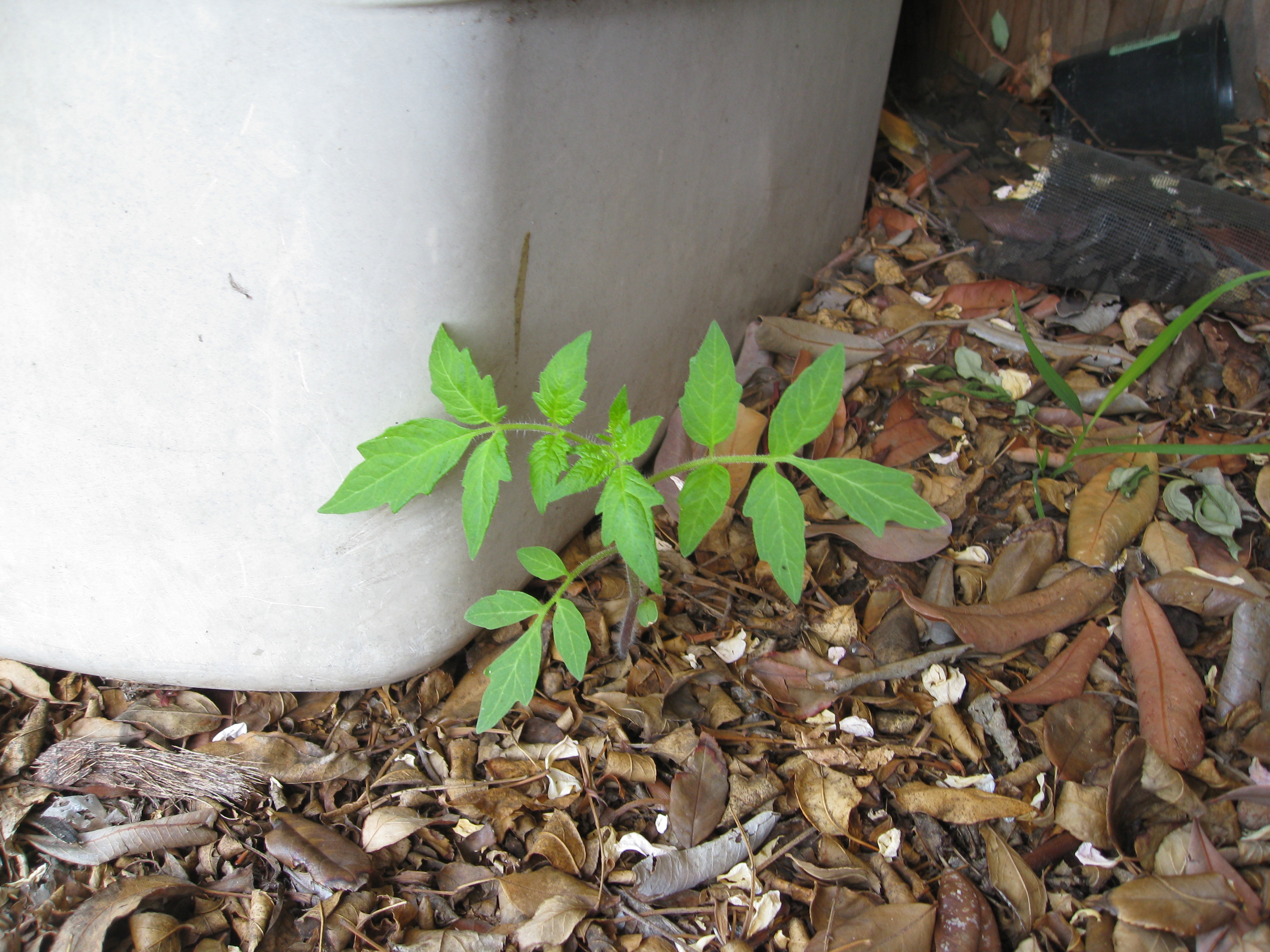
The tomato above went on to climb a giant Cecil Brunner rose with not a drop of irrigation and totally inadequate sunlight. It produced tons of paste tomatoes we had to pick from a step stool. We can’t explain it, except that nature is determined to survive.
How to Get More
Here’s my theory: when you buried the tomatoes with all the best of intentions, you interrupted the natural decay cycle of the tomato. The mucilaginous membrane around tomato seeds has to break down in order for seeds to germinate. By leaving them to desiccate above ground, that process continues. By burying the seeds, the seeds might rot before drying out and breaking down the membrane. Again, this is my theory.
So, it may be messy, but if you leave the tomatoes above ground and at the most throw some mulch over the top of them at the end of the growing season, I have a feeling you’ll end up with plenty of volunteers next year. Remove the human intervention and let nature do what she does best.
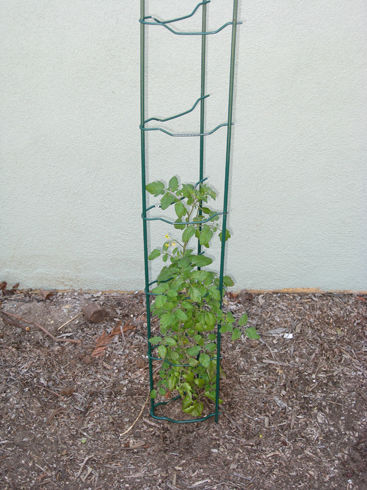
Your question also made me wonder if you conditioned or disrupted the soil before burying the tomatoes. Did you add compost or do a little weeding beforehand? Volunteers thrive because they have to struggle. If we make it easier for them, they won’t be as vigorous. Leave the soil as is, and set the stage for a game of survival of the fittest.
So, my best answer is to take yourself out of the equation and let Nature do her thing. In the end Nature always wins, right? Thanks for writing in, Jeff. Best question ever.
Hey Gardenerds, if you have suggestions for Jeff, or ideas that worked for you to generate more volunteers in your yard, post a comment below. We’d love to hear from you.

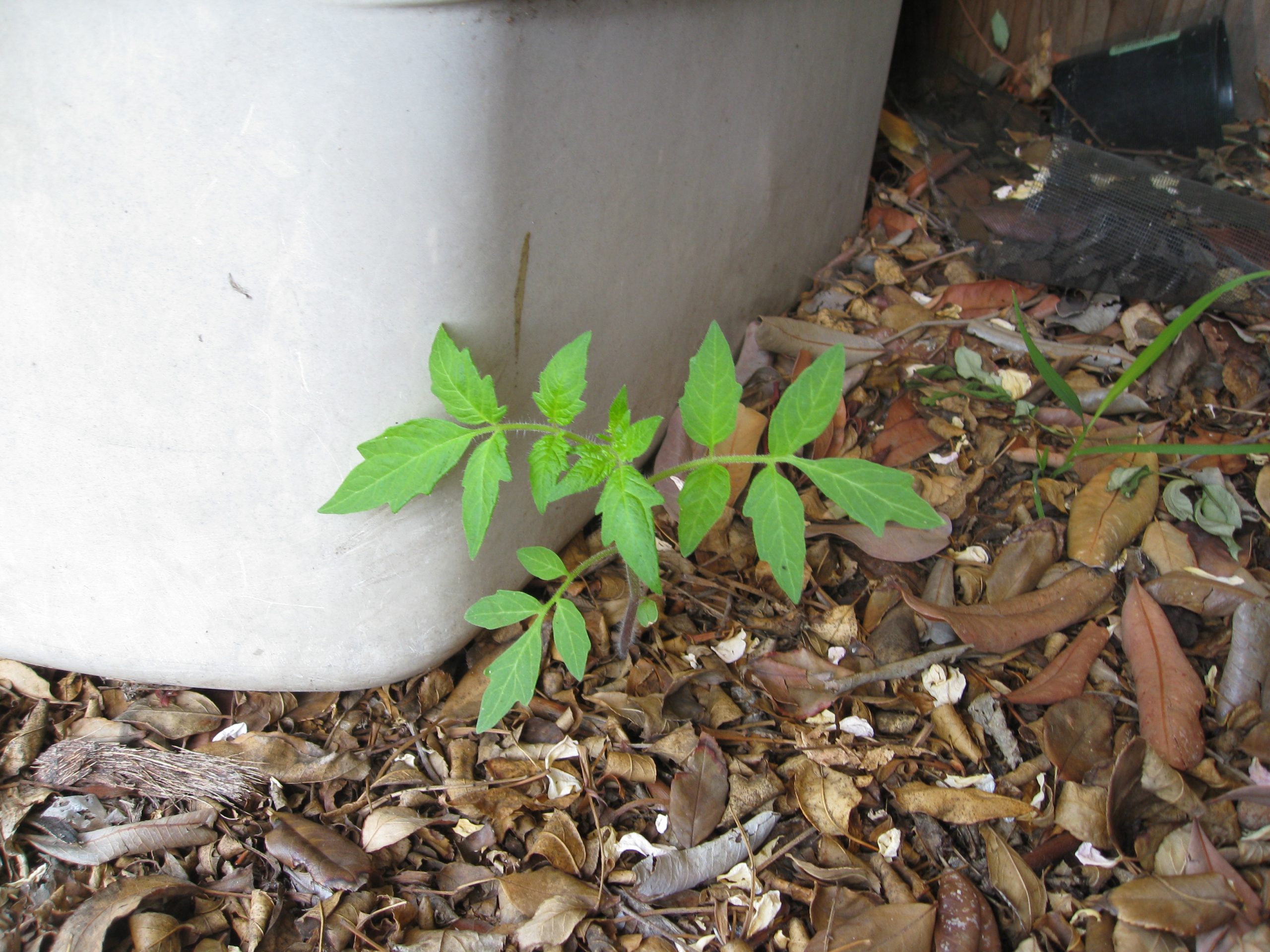
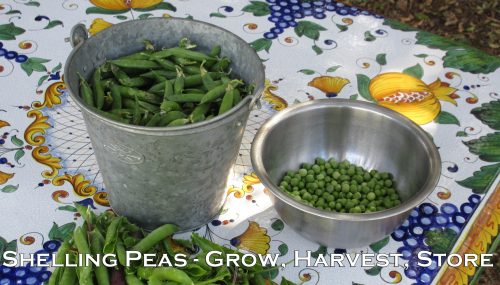

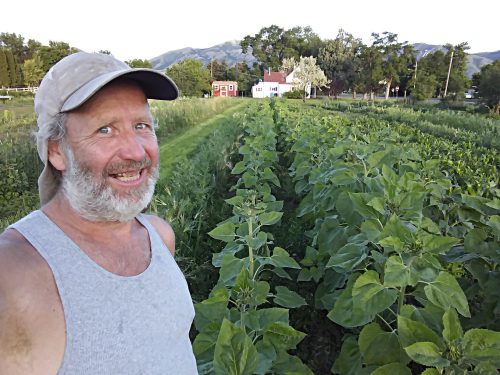
Last year I put in just three tomatoes in an area which I was told did not get enough sun. Well the tomatoes climbed up the fence they were next to until they were about 12 feet high and loaded with cherry tomatoes and light ripening tomatoes. I’m not using that area this year for tomatoes but I have six volunteers of different types of leaves.I’m leaving them right there to see what happens. Gardening is such a delight
YES! That’s what I’m talkin’ about!
This winter in Florida I move some of my finished compost to a raised bed. Just for fun I let 3 volunteers grow to entertain my grandson. Two of them were cherry tomatoes. The perfect fast-growing disease resistant plant was loaded with tomatoes that grew bigger than my typical early girls. Flavor was amazing, very few seeds. As far as I’m concerned this is the best tomato I’ve ever come across. I’m saving seeds , fermenting as we speak. What is the best way to get the exact parent plant? I have never seen a tomato like this, perfect. If there’s any possible way to preserve this variety oh, I must do it. Thank you, Cheryl Cheryl
Hi Cheryl, you’re doing what you’re supposed to do. Just save as many seeds as you can, and if the same type of tomato shows up anywhere else, save those seeds too. Saving seeds from as many plants as possible will help ensure genetic diversity. You’ll need to grow out those seeds next year and then save those seeds too. And so on. Keep selecting for the traits you want and your chances will be higher of getting something true to type. Here’s a basic video on how to save tomato seeds, though it sounds like you’re on your way. Good luck!
I just searched “volunteer tomatoes minnesota” and ended up finding this site. I live in zone 4 where it gets -20 F in winter, but to my surprise, I have several clusters of tomatoes that have popped up after the rain.
My soil was agitated last fall, but I do have a lot of organic matter making my soil easy to move with just your hand. Not sure if this helps or adds to the developing theory.
Thanks for sharing, Mark. And Yay for organic matter!
Hi Christy,
Since you liked this question, you might enjoy this little story: About 10 years ago a tomato plant appeared in my garden. It produced the most delicious tomatoes I’ve ever eaten – almost like biting into an apple. So, I saved the seeds and replanted them each year. However, the last few year’s crops have been dismal both in quantity and quality, so I opted to not plant tomatoes this year and even dismantled the raised bed and hauled away the soil. Well guess what, after all that, I have dozens of volunteers this spring and am scrambling to find places for the.
Jeff
That’s a good story, Jeff. Thanks for sharing.
Hi Christy,
Thanks for your response. Looks like I’m doing the wrong things to encourage volunteers, but don’t know how to get around them. Here’s what I do:
After the tomatoes are finished, I prepare the soil for a winter garden by mixing in a few bags of amend. Then in spring, I mix in more amend to get ready for planting tomatoes? Am I overdoing the amend?
Thx, Jeff
I amend my soil with compost in fall and spring, too, so I don’t think you’re overdoing it. You might try the no-till approach and just lay that amendment down on the soil surface, water it well and let your soil microbes work it in for you. That’s what we do here. Also, as @Jmelicher mentioned, if you make your own compost, it will be full of volunteers when you spread it out on your garden beds. We get a ton of volunteer tomatoes that way.
I rotate crops in my 4×4 raised bed gardens. This year the squash went into last year’s tomato plot. And there were 2 tomatoes popping up amongst all the new squash vines by June. I live in Zone 4 – Minnesota lake country. Winters are cold! Think -20 degrees, and raised beds! Each fall I dump my summer cooked compost, and my wonderful worm compost (black gold) on top of my raised beds. I vote for worm compost as the best for helping our gardens flourish with volunteers!
Ah! It must’ve been your comment that brought me here after searching “volunteer tomatoes minnesota”. I do a version of no-till, with some exceptions, but bottom line is, I do a lot of adding to the soil with organic matter.